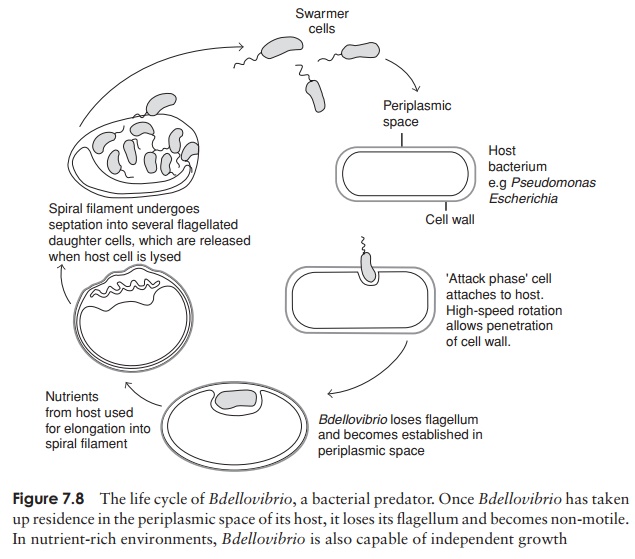Chapter: Essential Microbiology: Procaryote Diversity
Predatory Proteobacteria
Predatory Proteobacteria
Bdellovibrio is a unique genus belonging to the ╬┤-Proteobacteria. It is a very small comma-shaped bac-terium, which actually attacks and lives inside other Gram-negative bacteria (Figure 7.8). Powered by its flag-ellum, it collides with its prey at high speed and pene-trates even thick cell walls by a combination of enzyme secretion and mechanical boring. It takes up residence in the periplasmic space, between the plasma membrane and cell wall. The hostŌĆÖs nucleic acid and protein syn-thesis cease, and its macromolecules are degraded, pro-viding nutrients for the invader, which grows into a long

Representative genus: Bdellovibrio
Another group of bacteria that may be regarded as predatory are the Myxobacteria (Figure 7.9). These are rod-shaped bacteria lacking flagella, which yet are motile by gliding along a solid surface, aided by the excretion of extracellular polysaccharides. For this reason they are sometimes referred to as the gliding bacteria. They are heterotrophs, typically requiring complex organic nutrients, which they obtain by the lysis of other types of bacteria. Thus, unlike Bdellovibrio, they digest their prey before they ingest it. When a rich supply of nutrients is not available, many thousands of cells may aggregate to form fruiting bodies, inside which myxospores develop. These are able to resist drought and lack of nutrients for many years. Myxobacteria exhibit the most complex life cycles of any procaryote so far studied.
Representative genera: Myxococcus, Chondromyces

Related Topics